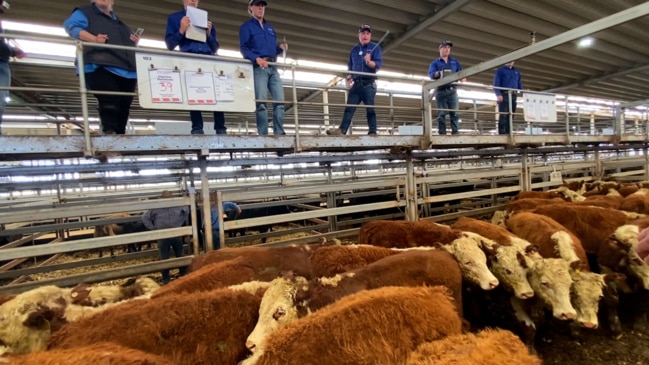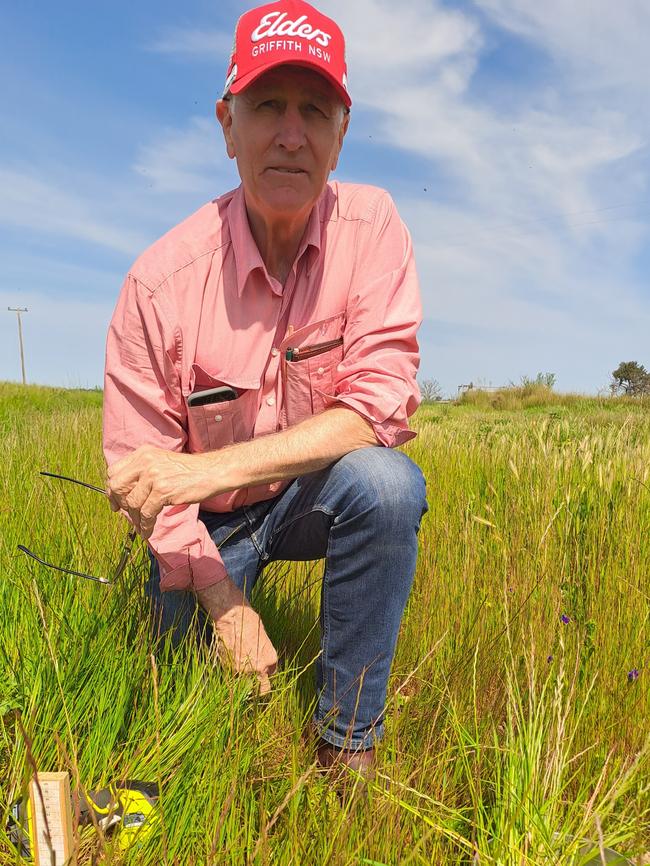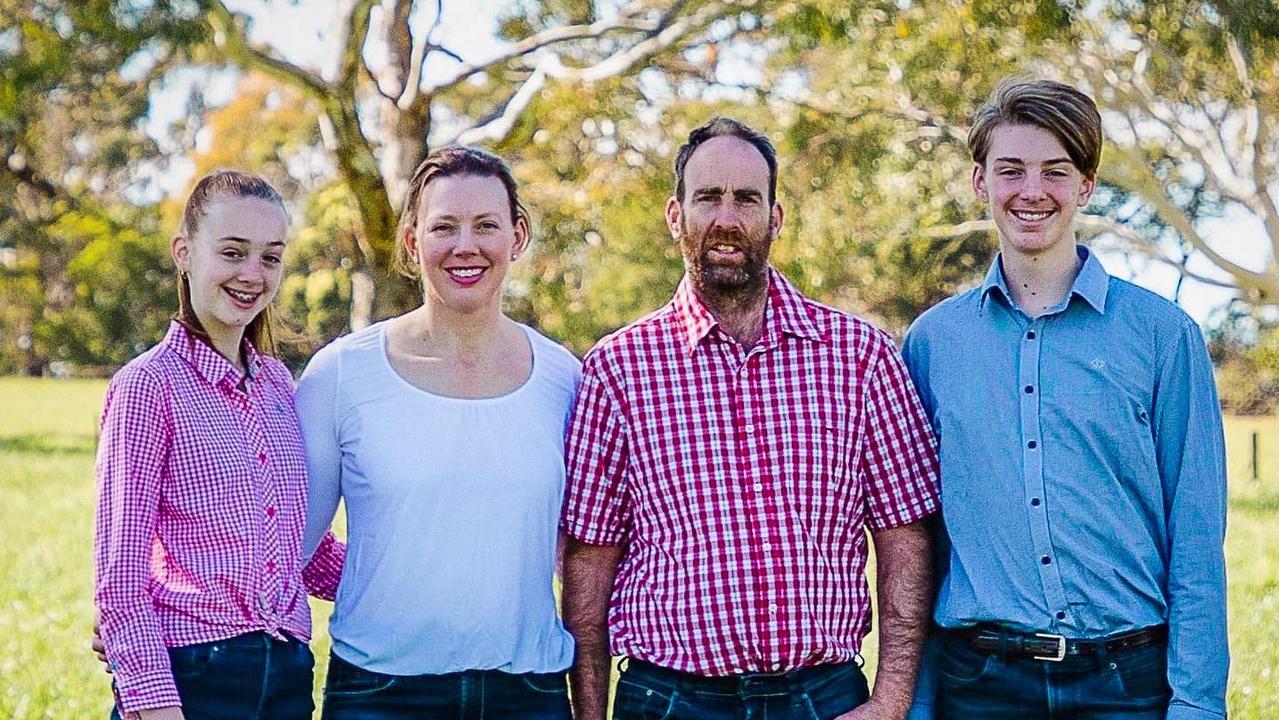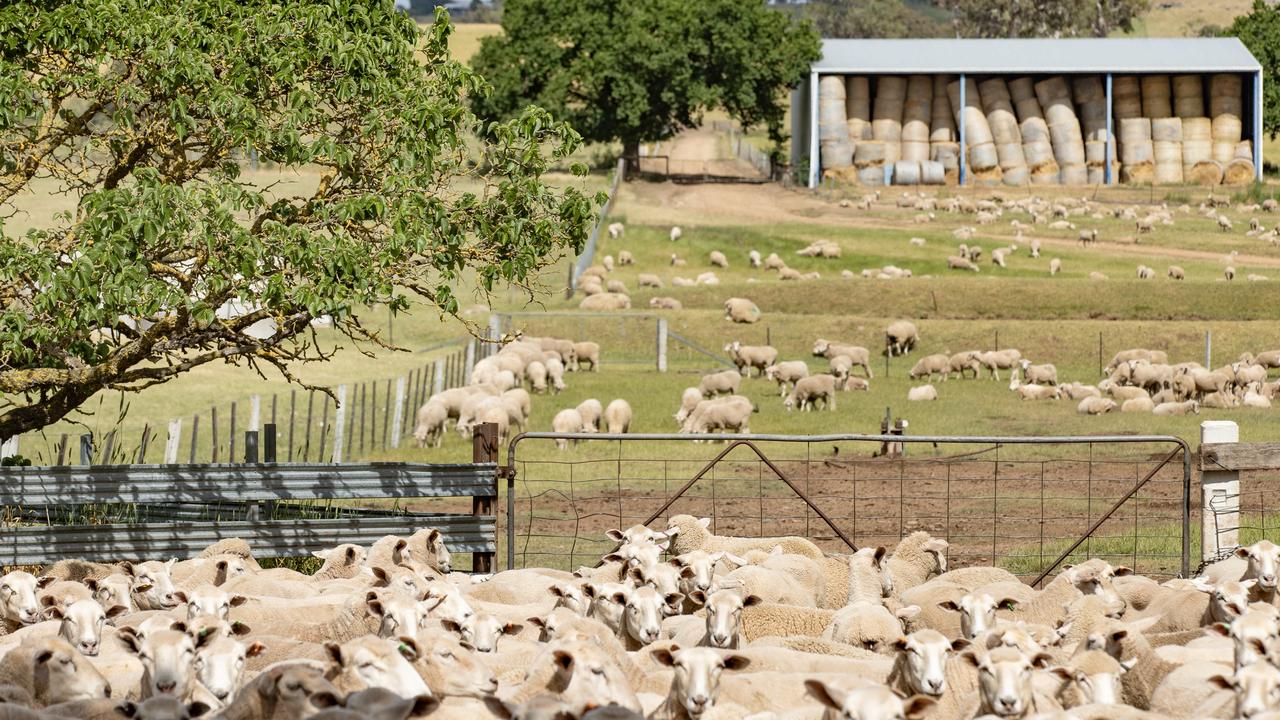Cattle finishing in a depressed market: How far should producers go
Budgeting and targeted finishing of cattle will be vital this season as the industry faces high grain and hay prices and a depressed beef market.

Feed budgeting and targeted finishing of cattle will be vital this season as the industry faces the reality of high grain and hay prices and a depressed beef market.
Tough choices are already being made in northern regions, with some farmers quitting young steers and heifers as they conclude it is not viable to hand feed and hold cattle.
Elders livestock production manager Rob Inglis said while the livestock industry was awash with negativity, there were still options and strategies to consider.
He said the first step was for farmers to do a feed inventory and assess the amount of pasture their property was carrying.

Mr Inglis was at Bunnaloo in southern NSW late last week showing local producers how to calculate the amount of dry matter in a paddock and work out carrying capacity.
He said he had been doing a series of workshops, working south from Wagga Wagga, and “the positive is most places are fairly well placed with 2000 to 2500kg dry matter per hectare’’.
He did acknowledge that with barley grass now quickly running to head, the growing season was basically over and current standing feed would have to last until at least April-May with the hope of an autumn break.
Once producers calculated feed, Mr Inglis said decisions could then be made about how to best use it; and forward planning was key.
“Decisions need to be strategic and you don’t want to get into a situation whereby you let all your stock go backwards and you’ve got nothing good to sell when you need to,’’ he said.
While all classes of cattle have suffered significant price corrections, values for animals showing weight and carcass finish are holding better than light store stock.

The trend shows up in the national saleyard indicators. Late last week the heavy steer indicator was at 252c/kg liveweight, dropping 202c/kg on year-ago levels. This is against a 300c/kg-plus drop for store yearling steers and heifers, which were at 240c/kg and 176c/kg liveweight respectively, according to Meat and Livestock Australia data.
Agents said the big price drop for light cattle had opened up trading opportunities, which meant agistment was difficult to source this spring as farmers with excess feed could often see more value in running their own stock.
Mr Inglis said purchasing grain or hay to hold livestock was still an option.
Using a ballpark figure of $400/tonne for hay, he said an average 600kg cow would require about 10kg a day at a cost of $4/day, while this could increase to $8/day for a cow and calf unit.
“The hay price of $400 is in northern NSW and southern Queensland and I don’t imagine it will be that expensive down here,” he said.
“Maintaining stock on supplementary feed is currently between 30 and 40 cents per DSE per day.
“But the cost of maintaining stock on improved pasture is between 5 and 10 cents per DSE per day.
“The take-home message is to use strategies such as early weaning to put as much condition on stock as possible while pasture quality is good.
“The cheapest place to store feed is on the animal’s back.”
On the topic of grain he said a shortage of urea this season could boost the amount of feed-quality grain on the market and potentially soften prices at the peak of harvest.
“Lower protein grain, particularly wheat, could become more buyable,” he said.
Mr Inglis said a feeding or maintenance program had to be considered against factors such as the condition and value of an animal now against the genetic merit and future production and value of the animal.
His final advice was not to panic amid all the negativity swirling around livestock markets but to seek as much advice as possible and make informed decisions.
“I personally think this current destocking event of cattle and sheep will be short-lived and there is merit in trying to hold on to stock as there will be blue skies (better times) ahead,’’ he said.




